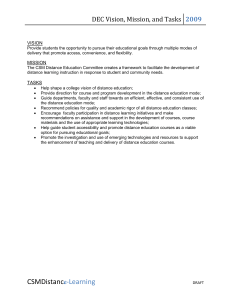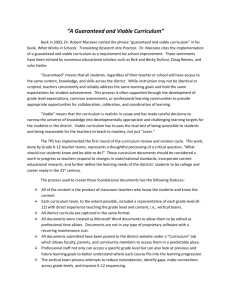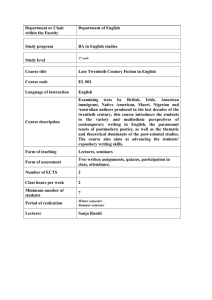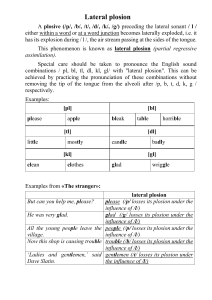English accents 8. Historical change (iii) British prestige Innovations resisted in
advertisement
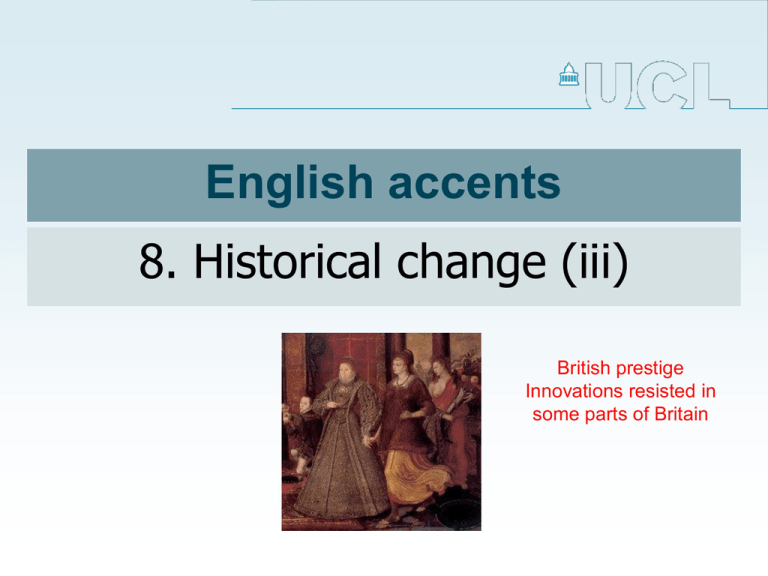
English accents
8. Historical change (iii)
British prestige
Innovations resisted in
some parts of Britain
marking criteria
A: Evidence of independent thought; critical awareness; wide knowledge
based on thorough research; clearly articulated, solid and viable
methodology; perhaps some originality or application of method, coupled with
viable conclusions. The structure and style should be clear, concise and
coherent. In short, a pleasure to read.
B: Good, highly competent work, demonstrating thorough knowledge of the
subject; good critical awareness with hints of potential for independent
thought; solid research, viable methodology and good application of it. The
structure and style should be clear, concise and coherent.
C: Good awareness of, and adequate engagement with, issues;
demonstrates satisfactory broad knowledge, with viable if somewhat sketchy
methodology. Some shortcomings but in general average work with viable
conclusions. The structure and style should be generally clear, concise and
coherent.
D: Average awareness of issues and knowledge, without any creative
development. The student has worked less than he/she should have, but
their work is not of such a standard deserving to fail. This is the minimum
standard required to build in the subject.
Posy essay: desiderata
Consistently distinguish writing from speech, using
appropriate notation: underlining or ‘quotes’ for orthography,
/slashes/ or [brackets] for transcribed speech.
Make clear the difference between special spellings that
imply a particular non-standard pronunciation and those
that do not (‘eye-dialect’: wot, bitta, actcherly, jus’, dunno).
Correctly identify and describe the phonetic processes depicted,
including the constraints on them. Properly distinguish elision
(deletion) / assimilation / fronting / stopping / glottalling.
Correctly identify the orthographic devices used by the
cartoonist, including the use of hyphens and apostrophes.
Show awareness of the principles of English spelling.
Recent changes in RP:
(i) early twentieth century
1 /O:
> Q/ in CLOTH words
FORCE merger:
loss of /O@/ (> /O:/)
cloth, cough, cross, lost, off, often…
floor = flaw, four = for, source = sauce
GOAT fronting: [oU > @U] goat, over the road, oh no
loss of [o]
obey, November, biological, microphone
opening of /{/
that bad man
replacement of [4] by []
very sorry for any errors
Recent changes in RP:
(ii) mid twentieth century
loss of /U@/ (> /O:/)
you’re
poor, sure, cure, your(s),
drift from weak /I/ to /@/
possible, visible, sanity, carelessness
plosive epenthesis
fence, instance, conscience, emphasis
yod coalescence
before weak V
actual, perceptual, gradual
glottalling of /t/ _C, _#C
football, witness, atlas, network,
quite C
glottal /t/
footprint
[ ˈfʊtʰprɪntʰ, ˈfʊt ̚prɪnt ̚, ˈfʊʔprɪnʔ ]
button [ ˈbʌtn̟, ˈbʌʔn̟]
Recent changes in RP:
(iii) late twentieth century
weak final [I] > [i] (“/i/”)
happy, coffee; various, radiate
backing of /@U/ before [5]
told, cold, goal, whole
• unrounding, fronting of /u:, U/
• glottalling of /t/ in envs. _#V, _||
• vocalization of /l/ ([5 >
o])
quite easy, not only, right.
milk, shelf, feel, table, middle
• yod coalescence before strong V
• monophthonging of /e@/ [>
spoon, you, good
Tuesday, tune, reduce, duke
E:] fair and square, Mary
• “uptalk” (HR on statement)
My name’s Mary /Smith.
• s-affricate assimilation (s>S)
_tr: strong
_tS: student
The symbol i
green — grin
sleep — slip
feeling — filling
i:
I
happy
coffee
valley
glorious
tell me
i
tu:n,
tSu:n
du:k
,
dZu:
k
nu
:
Wells, 2000:
Longman
Pronunciation
Dictionary
uptalk
(old)
\Hi. | 'I’m 'Cathy \Pomeroy. | I’m a 'customer \service
agent.
(new)
\Hi. | 'I’m 'Cathy /Pomeroy. | I’m a 'customer /service
agent.
There was this /girl | who lived like 'three doors /down
from me.
We’re 'working \/people, | but our 'pay doesn’t re/flect
that.
s-affricate assimilation
s → ʃ / _ tr, tʃ
[s] changes to [ʃ]
before an affricate
student
ˈʃtʃuːdn̝t
strong
ʃtrɒŋ
